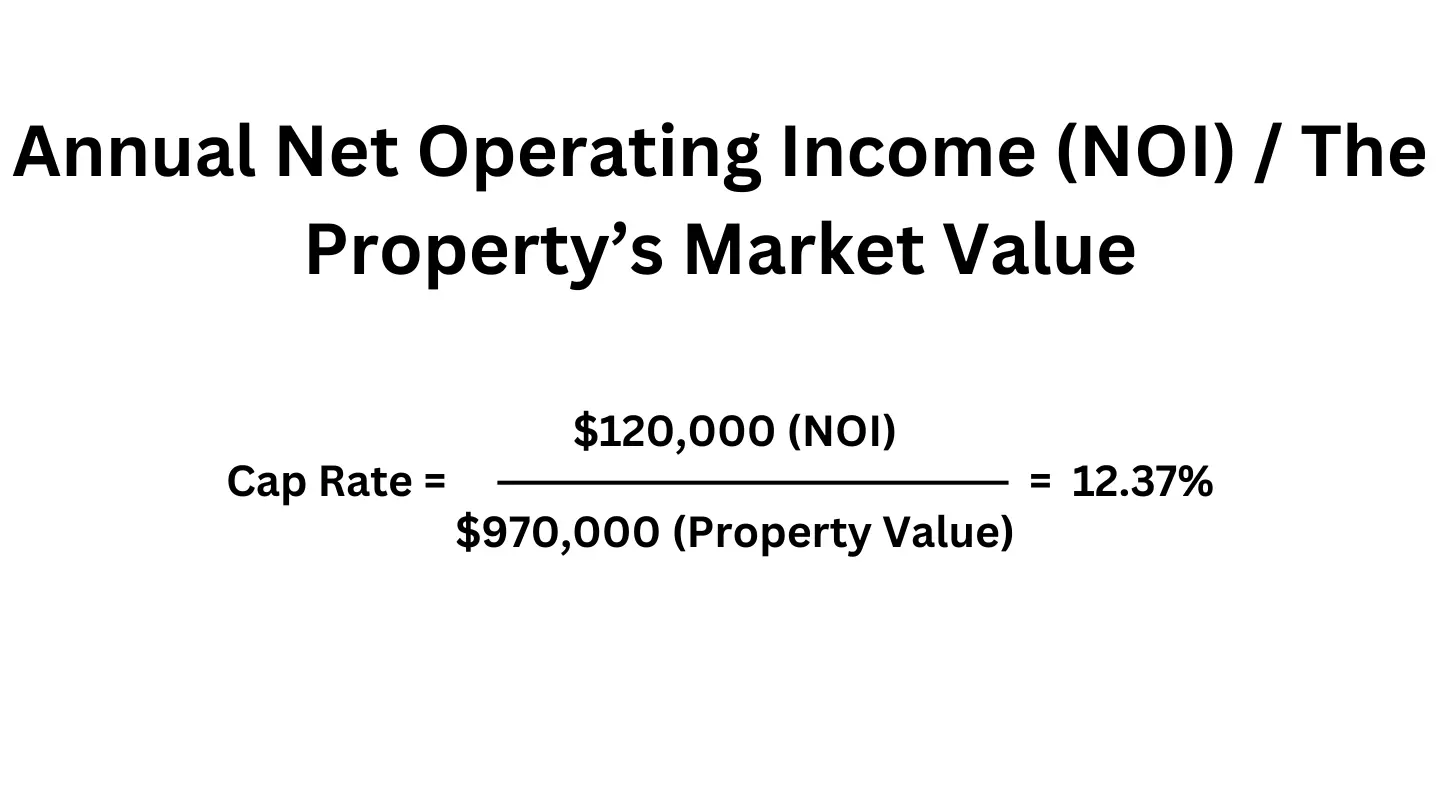Overview
The cap rate formula is a cornerstone metric in commercial real estate, offering insights into the potential return on an investment property. Understanding how to calculate and interpret cap rates is essential for investors and landlords alike.
In this guide, we’ll explore:
- The cap rate formula and its applications
- Key factors influencing cap rates
- Real-world examples of cap rate calculations
- How to determine property value using cap rate and NOI
- Limitations and additional considerations
Cap Rate Formula
The capitalization rate, or cap rate, is calculated as:

Cap Rate = Net Operating Income (NOI) / Current Market Value
For example, if a property has a Net Operating Income of $100,000 and a market value of $2,000,000, the cap rate would be:
Cap Rate = $100,000 / $2,000,000 = 5%
This indicates a 5% annual return on the investment based on its purchase price.
How to Back Out Property Value
In some scenarios, you may know the Net Operating Income (NOI) and the cap rate but need to determine the property value. The formula is reversed as follows:
Property Value = Net Operating Income (NOI) / Cap Rate
For example, if a property generates $120,000 in NOI annually and has a cap rate of 6%, the property value would be:
Property Value = $120,000 / 0.06 = $2,000,000
This calculation is particularly useful for investors evaluating whether a property is priced appropriately based on its income-generating potential.
Factors Affecting Cap Rates
Several factors influence cap rates, including:
- Location: Prime locations tend to have lower cap rates due to higher demand and stability. Proximity to employment centers, highways, and public transit further decreases cap rates because these factors enhance tenant demand and reduce turnover.
- Asset Class: Multifamily and industrial properties often exhibit lower cap rates compared to retail or office spaces, as these classes tend to have more stable cash flows and higher demand.
- Interest Rates: Rising interest rates increase borrowing costs, typically leading to higher cap rates. Conversely, lower interest rates reduce financing expenses, which can support lower cap rates.
- Tenant Quality: Reliable tenants with long-term leases reduce investment risk and can lower cap rates, as consistent rental income is more assured.
- Market Conditions: Economic factors, such as GDP growth and unemployment, play a major role. Higher GDP and lower unemployment usually result in lower cap rates due to increased investor confidence and demand for properties.
- Rent Growth: During periods of inflation or economic expansion, anticipated rent growth can offset higher borrowing costs, keeping cap rates stable or even lowering them. In contrast, stagnant or declining rents put upward pressure on cap rates.
- Economic Cycles: During periods of economic stress, cap rates tend to rise as property values decrease and perceived risk increases. Conversely, in economic expansion, even with moderate interest rate increases, cap rates may remain stable if rental income growth is anticipated.
Examples
Consider two properties:
- Property A: NOI of $80,000 and market value of $1,000,000. Cap rate = 8%.
- Property B: NOI of $120,000 and market value of $2,000,000. Cap rate = 6%.
While Property A offers a higher cap rate, it may come with higher risk. Property B provides stability but with lower returns.
Limitations of the Cap Rate
Cap rates are valuable but not without limitations:
- They do not account for future income or expenses.
- They exclude the effects of financing and leverage.
- They may not reflect market volatility or property-specific risks.
Investors should use cap rates alongside other metrics, such as cash-on-cash returns and internal rate of return (IRR).
Frequently Asked Questions
Final Thoughts
Understanding the cap rate formula is crucial for making informed investment decisions in commercial real estate. While cap rates provide a snapshot of potential returns, investors should consider broader market dynamics and individual property characteristics for a comprehensive analysis.
At Simpli Management, we offer tools to streamline property analysis and maximize your investment potential. Explore our property valuation tool and take your real estate portfolio to the next level.

